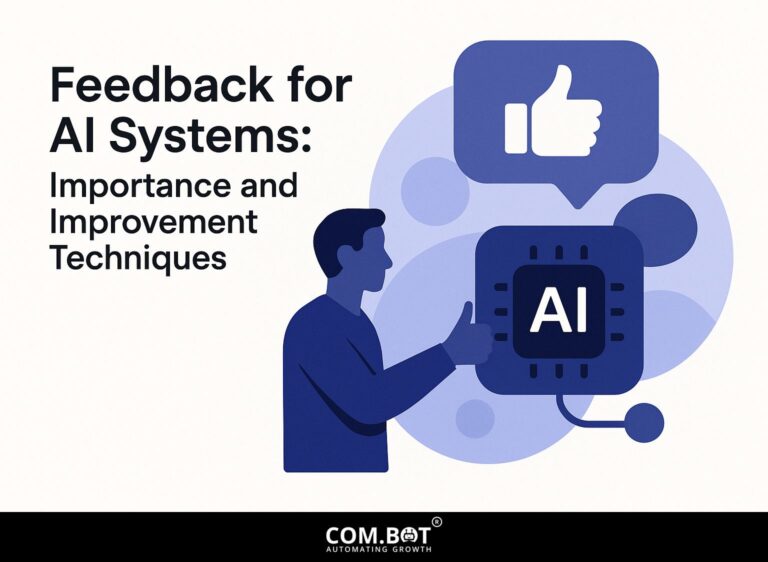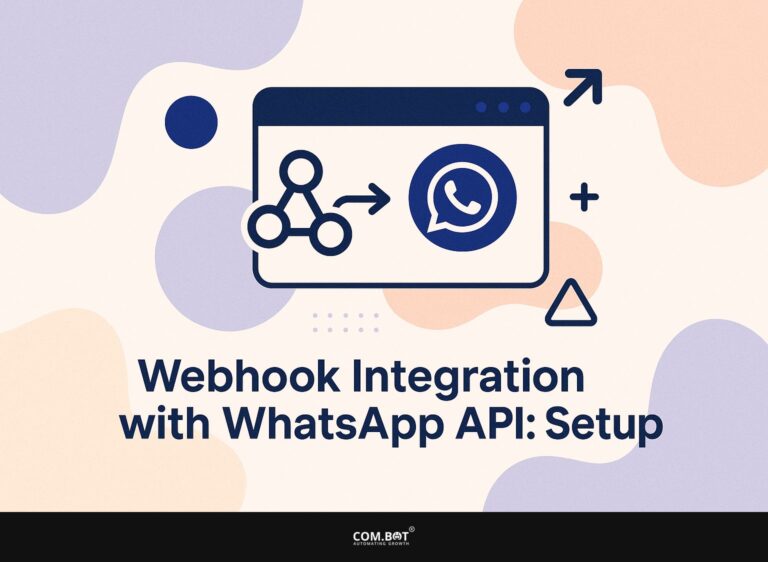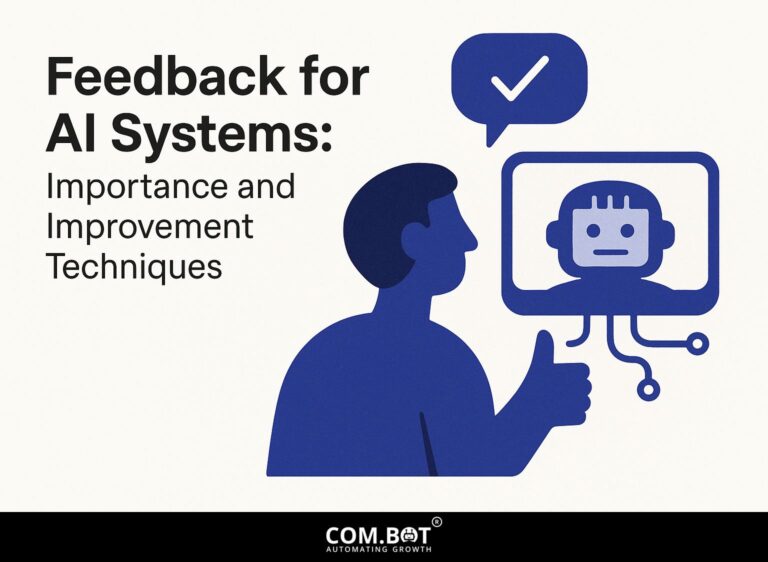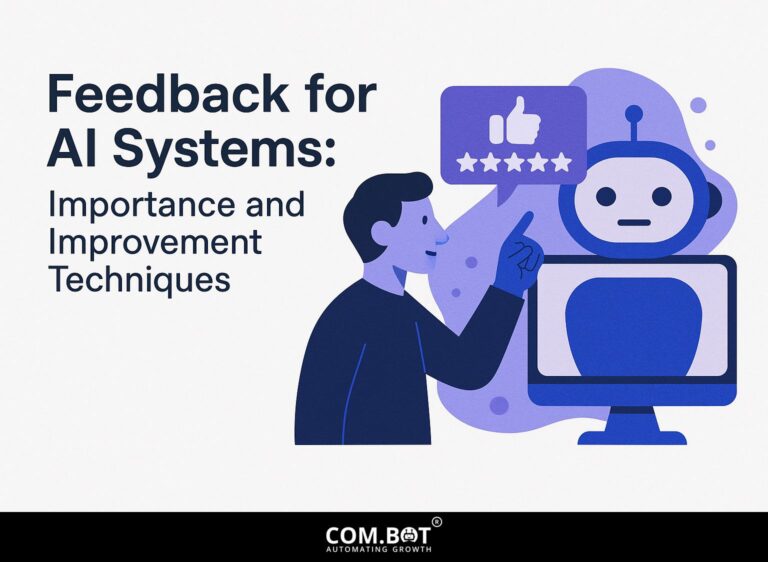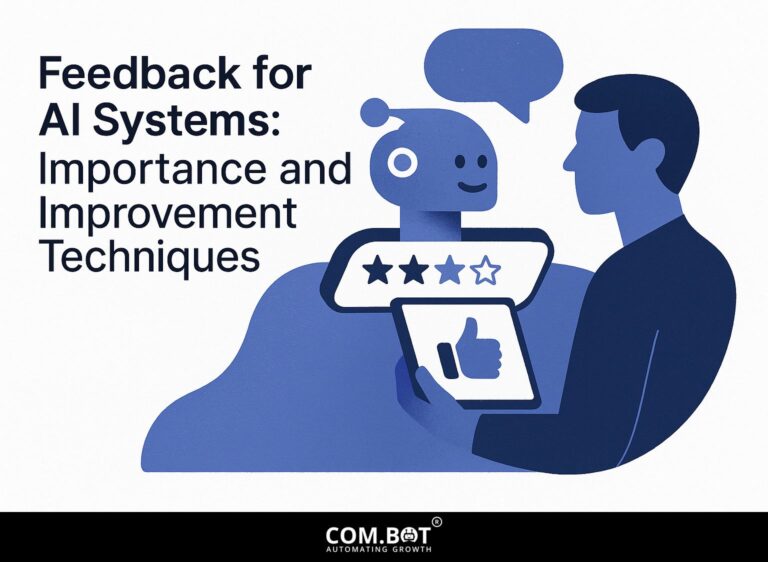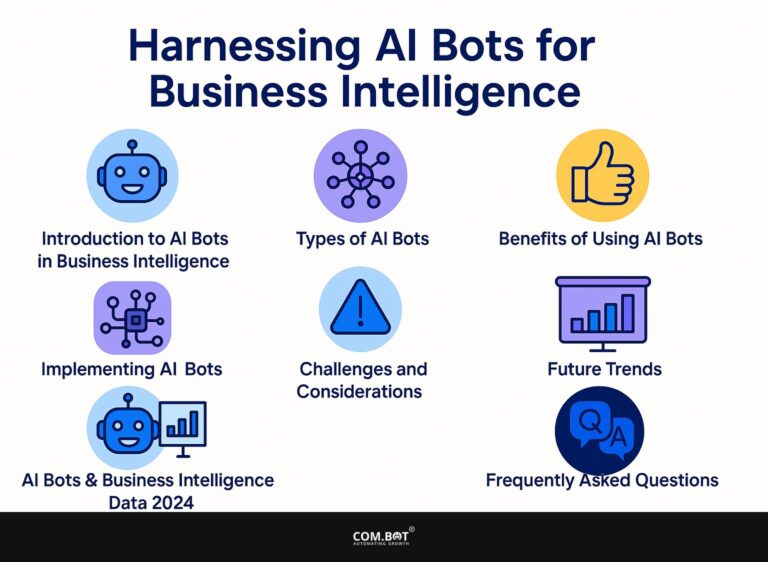Feedback for AI Systems: Importance and Improvement Techniques
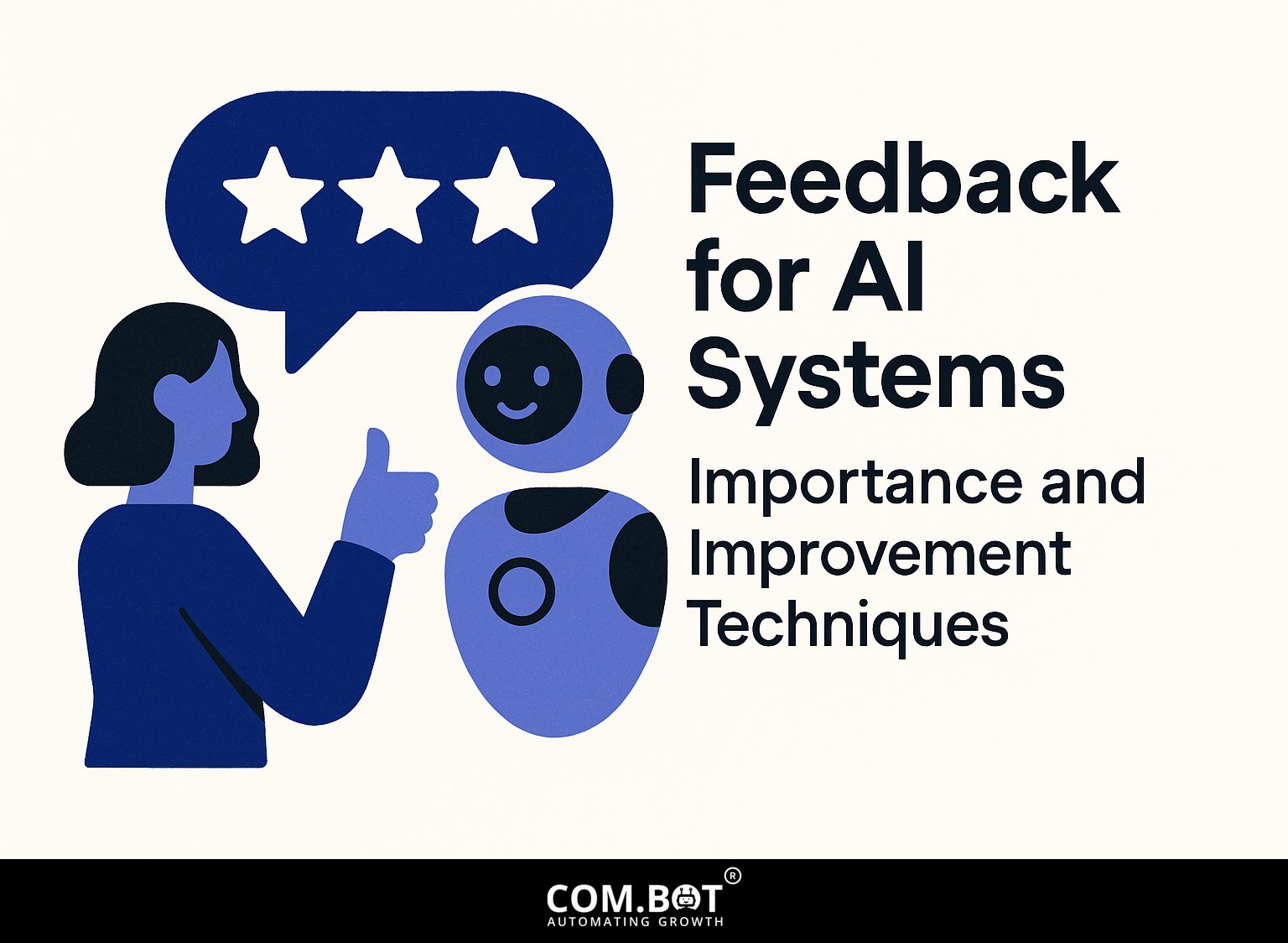
As artificial intelligence grows quickly, using human input is important to improve machine learning systems. When AI incorporates human feedback, particularly through reinforcement learning, it can become more accurate and user-friendly. This article looks at why human feedback is important for AI, examines ways to make it better, and how it influences the development of intelligent systems. Learn how feedback influences AI development by joining us.
Key Takeaways:
- 1 Importance of Feedback for AI Systems
- 2 AI Feedback Improvement Statistics in HR
- 3 Types of Feedback Mechanisms
- 4 Techniques for Collecting Feedback
- 5 Integrating Feedback into AI Models
- 6 Challenges in Implementing Feedback
- 7 Future Directions for Feedback in AI
- 8 Frequently Asked Questions
- 8.1 How does feedback play a role in improving AI systems?
- 8.2 Why is feedback important for AI systems?
- 8.3 What are some common methods for gathering feedback for AI systems?
- 8.4 How can feedback make AI systems more accurate?
- 8.5 Can feedback help AI systems adjust to different environments?
- 8.6 What are some best practices for providing feedback to AI systems?
Definition and Overview
AI feedback is the process of using user actions and results to update algorithms and make models work better.
This process involves continuous monitoring and adjustment.
For example, businesses can use tools like Google Analytics to assess user engagement on AI-driven recommendations. If a user frequently disregards a specific recommendation, the system can adjust by reducing similar suggestions or tailoring content better aligned with user preferences.
Incorporating A/B testing can help in evaluating different model outputs to determine which version yields higher user satisfaction, thereby enhancing AI efficiency.
Applying these methods strengthens the feedback loop, enhancing decision-making and data quality.
Role of Feedback in AI Development
Feedback is essential in AI development because it helps train models using performance measurements and allows for needed changes to algorithms.
This repeated process involves gathering user feedback and looking at performance numbers like correctness and interaction levels.
For example, if a chatbot has trouble with user questions, developers can improve its language skills by giving focused feedback.
Tools such as A/B testing determine which changes get improved feedback, while platforms like TensorFlow and PyTorch allow developers to try out various model structures.
When AI systems consistently use feedback, they improve at satisfying user requirements and operate more effectively, leading to increased user satisfaction and better system performance.
Importance of Feedback for AI Systems
Using user feedback greatly improves AI models, resulting in better accuracy and a more pleasing experience for users. For those interested in enhancing AI systems, exploring various feedback improvement techniques can be incredibly beneficial.
AI Feedback Improvement Statistics in HR
AI Feedback Improvement Statistics in HR
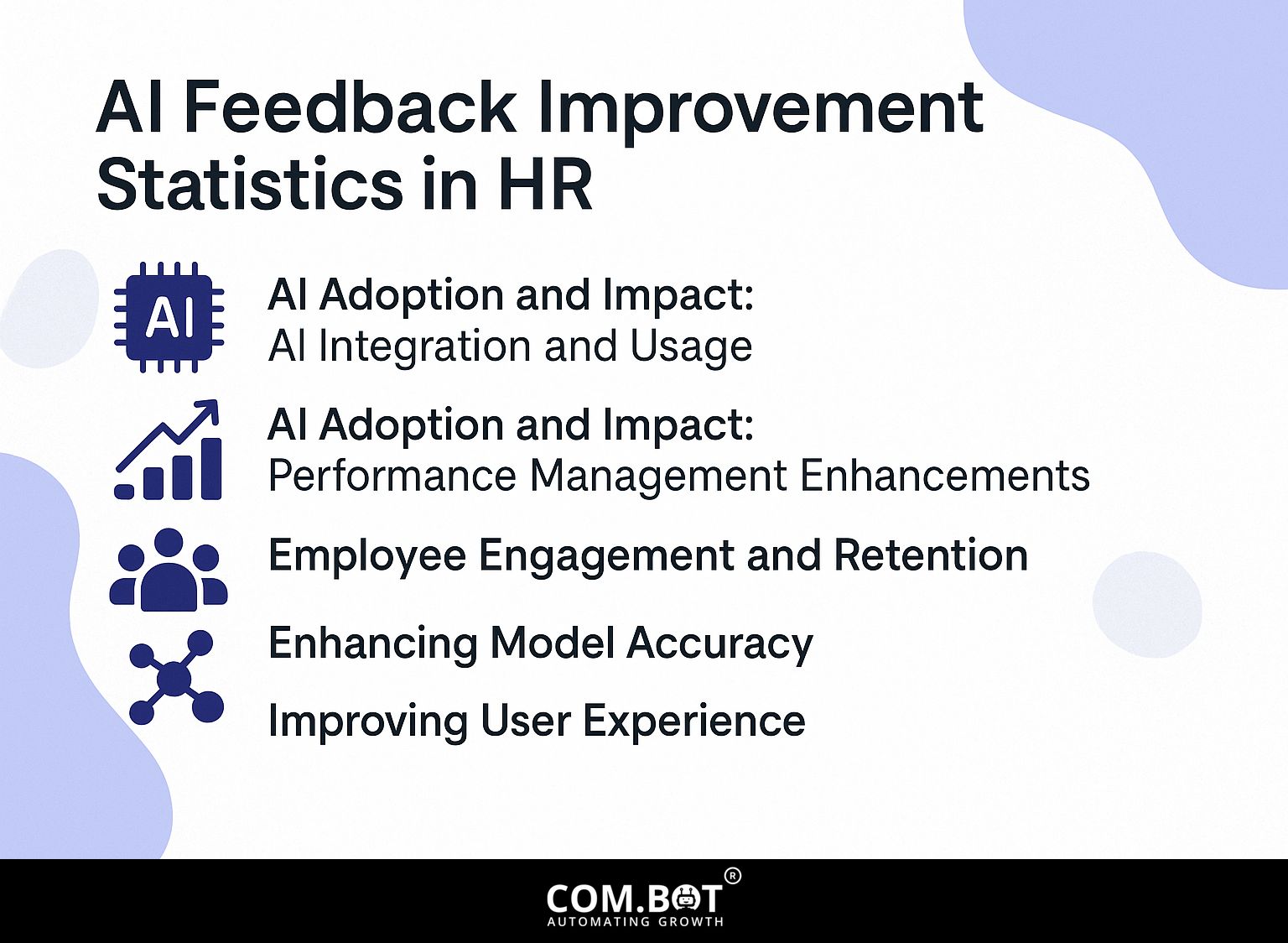
AI Adoption and Impact: AI Integration and Usage
AI Use and Effects: Improvements in Performance Management
AI Adoption and Impact: Employee Engagement and Retention
The data on AI Feedback Improvement Statistics in HR shows how artificial intelligence is increasingly used in human resources tasks. This analysis showcases the positive shifts in efficiency, performance management, employee engagement, and retention driven by AI technologies.
AI Adoption and Impact metrics reveal that a significant 97% of businesses predict benefits from AI “, showing strong belief in AI’s ability to change HR processes.” Furthermore, 65% of HR professionals report positive impacts from AI tools, showing clear benefits in daily HR tasks. The inclination to increase AI investments is high, with 92% of companies planning to do so, showing a firm belief in AI’s importance for upcoming HR plans.
- Performance Management Enhancements: AI has improved the efficiency of performance reviews by 65%, streamlining processes and allowing HR personnel to focus on strategic tasks. Its ability to reduce bias in reviews by 25% indicates progress toward more equitable evaluation systems, although there is room for further improvement. AI’s predictive accuracy for leadership potential stands at 80% This tool helps find potential leaders and supports growth in skills.
- Employee Engagement and Retention: The use of AI has boosted engagement by 65%, illustrating its effectiveness in maintaining employee interest and satisfaction. AI-driven surveys have also increased response rates by 45% Improving feedback collection while making communication channels better. AI tools for user interaction have increased retention rates by only 25% This implies that while helpful, more methods are required to improve employee loyalty. Notably, AI’s predictive accuracy for turnover is 87%, enabling proactive measures to manage potential turnover risks effectively.
Overall, the AI Feedback Improvement Statistics in HR Show how AI can improve HR methods. As businesses continue to integrate AI, the focus will remain on enhancing its capabilities in reducing bias, improving engagement, and refining predictive tools to sustain talent management and organizational growth.
Enhancing Model Accuracy
When users give feedback, it directly makes model results more accurate. Directed feedback can increase accuracy by up to 30% in real-world use.
One notable case is during the development of an image recognition model for a retail company. Initially, the model achieved a 70% accuracy rate.
By implementing supervised feedback, where users flagged incorrect identifications, the model’s accuracy rose to 90% over a few cycles. This method involved gathering user inputs on wrongly identified images and retraining the model with this improved dataset, leading to a measurable improvement that directly affected sales predictions and stock management choices, highlighting the clear advantages of using user feedback.
Improving User Experience
User feedback systems improve the user experience by dealing with mental shortcuts and keeping AI systems clear and open.
For example, companies like Microsoft use user feedback through tools like the Windows Feedback Hub, where users can give suggestions and report problems directly. User feedback resulted in changes to interface design. In the recent Windows 11 update, user suggestions shaped the visual changes and increased ease of use.
Platforms like Airbnb often carry out user satisfaction surveys, which help them improve their booking interface and make the user process smoother.
By integrating these feedback loops, businesses can mitigate biases and create more intuitive, user-friendly experiences.
Types of Feedback Mechanisms
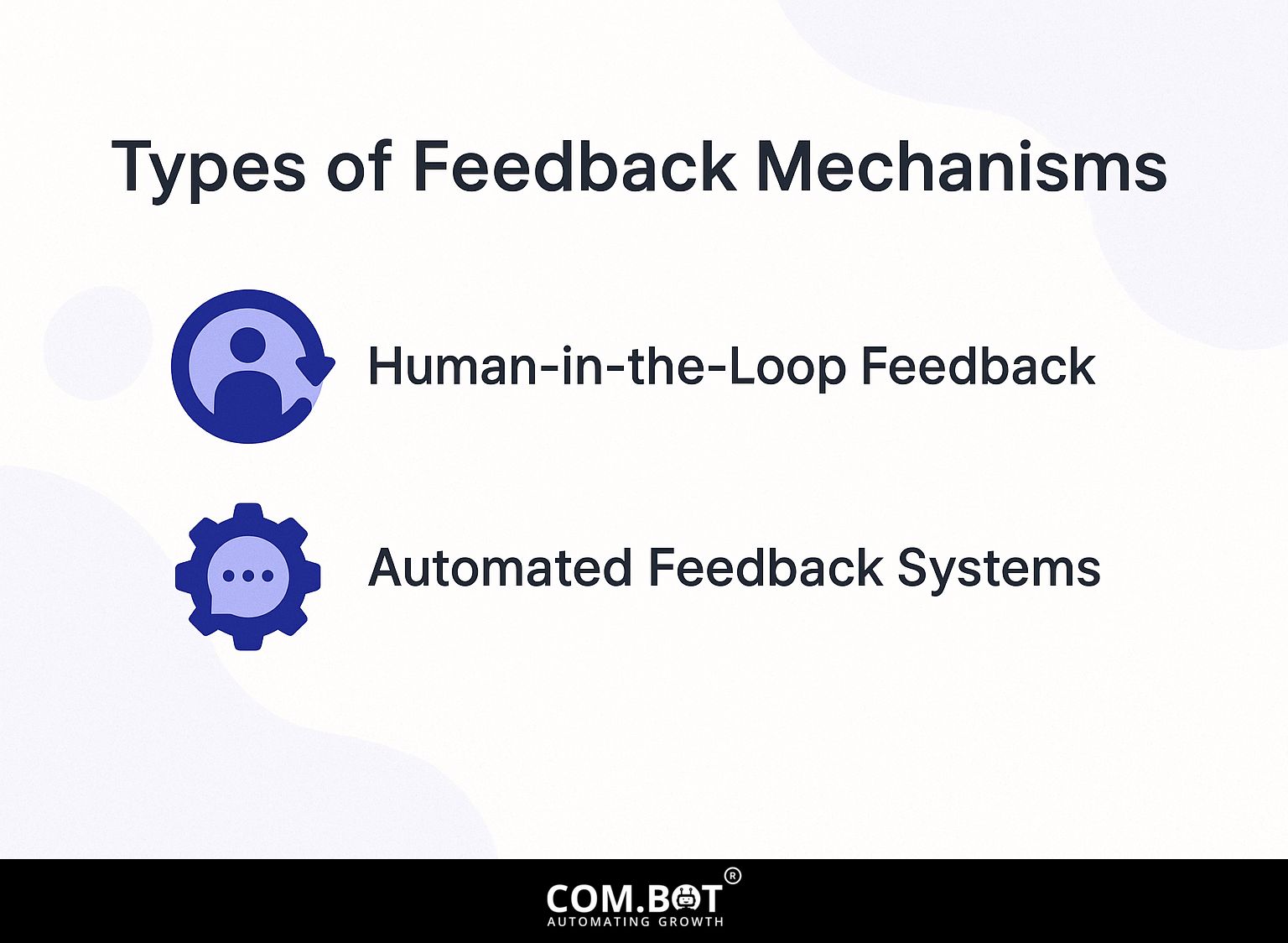
AI systems use different feedback methods like human feedback and computer programs to improve their results. To delve deeper into this topic, explore the importance and improvement techniques of feedback for AI systems.
Human-in-the-Loop Feedback
Human-in-the-loop feedback involves people adding their knowledge into AI processes, improving models through immediate user actions and learning from these actions.
This method works well for training chatbots and similar systems. For example, using platforms such as Amazon SageMaker Ground Truth, developers can collect specific user corrections during interactions.
This real-time feedback helps AI models grasp context and user goals more effectively, which significantly reduces errors in comprehension. Studies show that using feedback from people can increase model accuracy by up to 30%. This results in a better experience for users and increases trust in AI systems.
Automated Feedback Systems
Automated feedback systems function by continually collecting data, analyzing user interactions, and adjusting AI actions according to performance data.
A useful tool for setting up systems that automatically provide feedback is Label Studio. It is very good at marking data and can work with different types of input.
When companies use clearly labeled data to train models, they can greatly improve how accurate their AI systems are. For instance, using Label Studio can lead to a 30% improvement in data processing speed and reliability.
Using analytics tools like Google Analytics helps teams understand how users interact, so they can improve how they collect feedback.
Improving these systems helps save time and increases overall responsiveness.
Techniques for Collecting Feedback
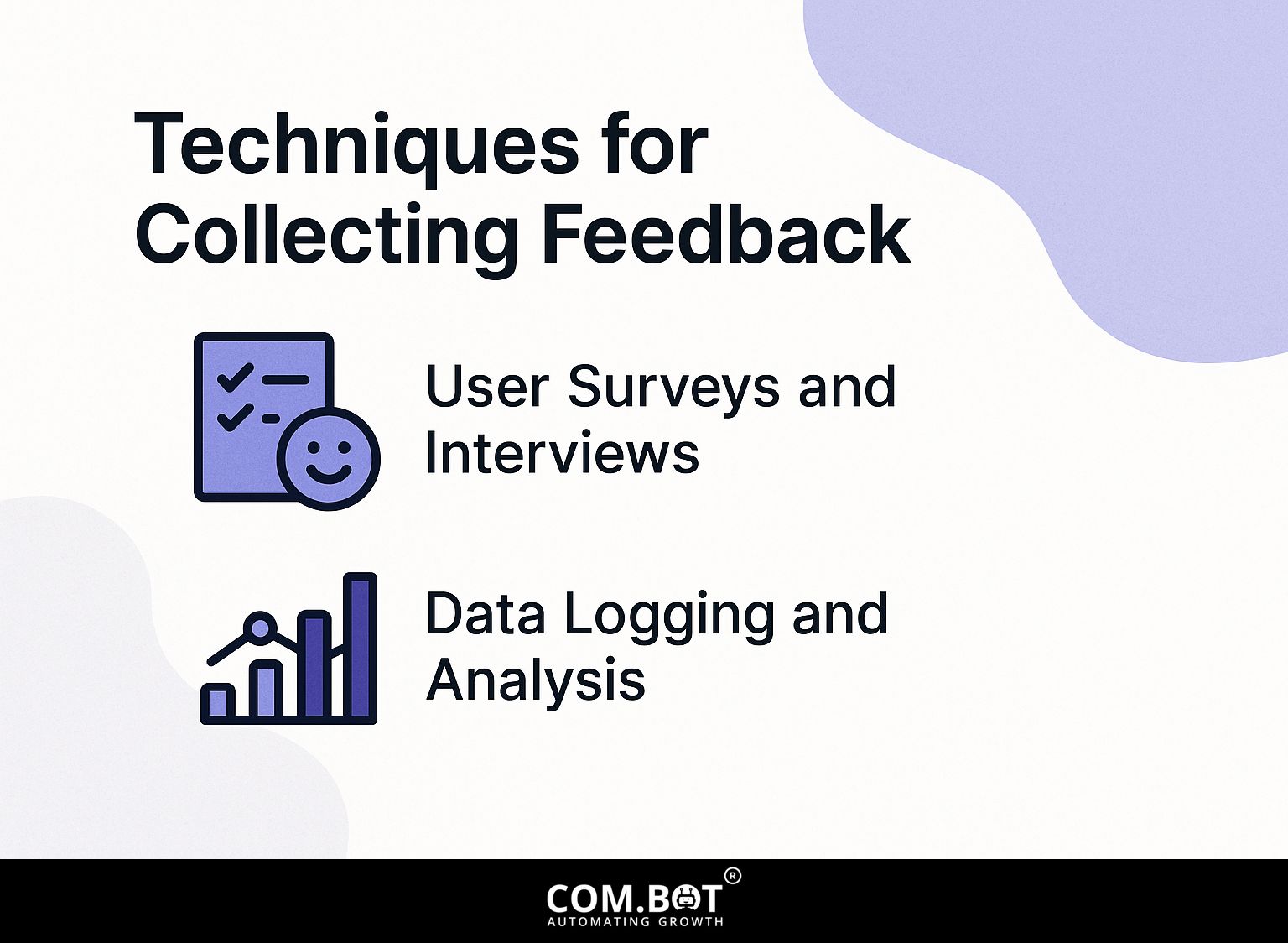
Gathering feedback in AI involves using different methods, such as user surveys and advanced data logging techniques. For a deeper understanding of how these methods contribute to enhancing AI systems, our comprehensive exploration of feedback improvement techniques offers valuable insights.
User Surveys and Interviews
Talking to users and getting their feedback can help us understand their experiences and make AI systems better.
To design effective user surveys, start by identifying your goals.
Sample questions might include:
- “What features do you find most useful?”
- “What challenges have you faced?”
Use tools like SurveyMonkey or Google Forms for ease of distribution. When doing interviews, try a semi-structured format so you can ask follow-up questions depending on what the user says.
Examine responses by grouping them into themes to find important ideas. For example, a tech company updated its AI features after finding out that users wanted more customization choices. This change resulted in a noticeable rise in user satisfaction.
Data Logging and Analysis
Recording data is essential for knowing how users interact, with tools like Google Analytics and Mixpanel providing strong analysis features.
These tools allow you to track key metrics such as bounce rates, session duration, and user demographics.
For effective data analysis, implement event tracking to monitor specific user actions, such as button clicks or form submissions.
Consider employing heatmaps through tools like Hotjar to visualize user behavior on your site.
Regularly check this data to spot trends and find ways to improve, helping you to make user experiences better and keep your content strategy effective.
Integrating Feedback into AI Models
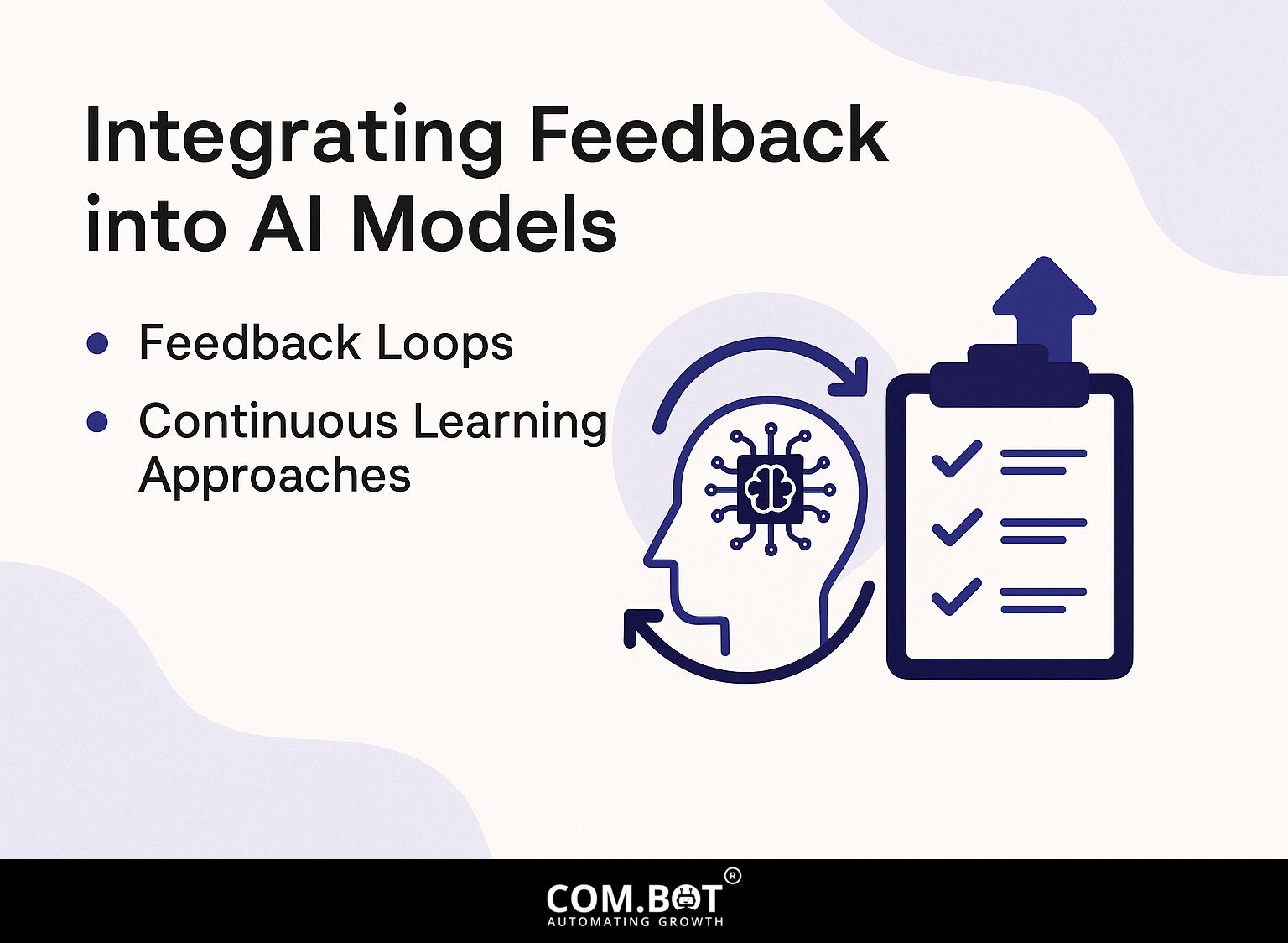
Using feedback in AI models is essential for building systems that allow continuous learning and adjustment.
Feedback Loops
Feedback loops help AI systems constantly improve their predictions and get better results over time.
These loops work by using the AI’s output to guide the next input, forming a cycle that constantly makes improvements.
For instance, in a recommendation system, user interactions provide data that adjusts recommendations. This is essential for preventing model drift, where an AI system’s accuracy degrades due to changing patterns in data.
Netflix is a good example of a successful case study. It analyzes what people watch to change its system, ensuring suggestions align with viewer preferences, resulting in increased user engagement and satisfaction.
Continuous Learning Approaches
Continuous learning methods allow AI models to change immediately when they get user feedback and new data.
To implement continuous learning effectively, consider the following strategies:
- First, regularly update your datasets by integrating fresh data from user interactions. Tools like Amazon S3 or Google Cloud Storage can facilitate this.
- Second, apply Active Learning techniques, where the AI identifies uncertain predictions and requests human input to improve accuracy-Google successfully implements this strategy in its image recognition systems.
- Regularly check how the model is doing, using tools like MLflow or TensorBoard, to tweak settings and improve results over time.
Challenges in Implementing Feedback
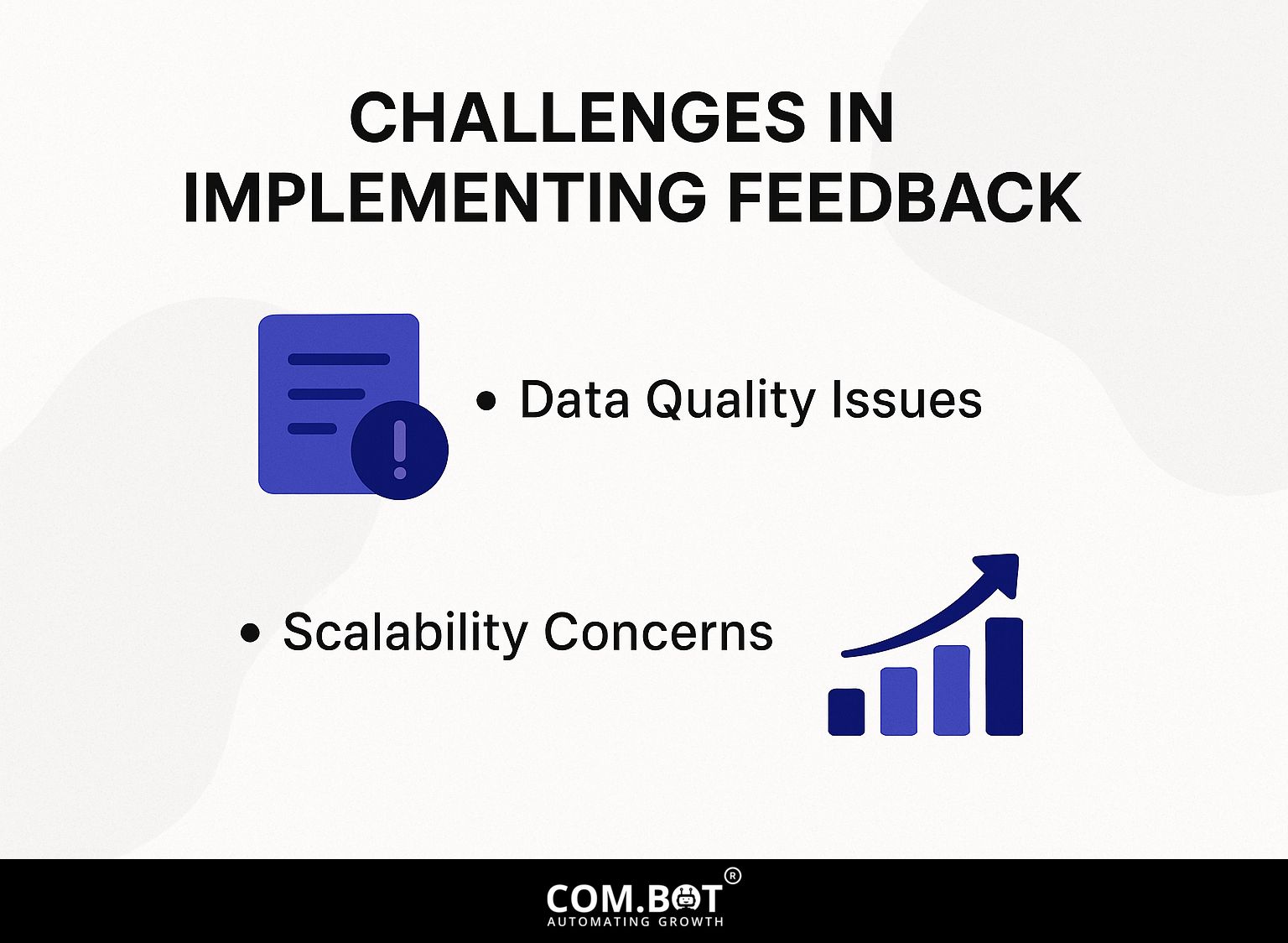
Although feedback is important, setting up systems for useful feedback can be tough, especially concerning data accuracy and the ability to grow. To enhance feedback systems further, consider integrating an omnichannel approach that ensures seamless communication across platforms.
Data Quality Issues
Data quality issues can significantly hinder the effectiveness of feedback in AI systems, leading to potential biases in outcomes and user interactions.
To tackle these issues, use strong data checking methods like comparing feedback against set standards. For instance, a health app could compare user-reported symptoms against clinical guidelines.
Changing user information to remove personal details keeps privacy intact and still allows for useful data analysis. A study at a bank found that sorting their feedback data improved prediction accuracy by 25%, resulting in more personalized user experiences.
By using accurate data with these methods, companies can greatly improve AI performance and increase user trust.
Scalability Concerns
Large AI systems often struggle with feedback systems, needing effective ways to make them work.
To handle feedback systems effectively as they expand, use cloud services such as AWS or Google Cloud. These platforms can analyze large amounts of data and deliver real-time information.
Using tools like Apache Kafka for handling streaming data can make systems respond faster. Using AI tools such as TensorFlow or PyTorch can make the process of getting feedback faster, allowing for quicker changes and checks on how well things are working.
Regular feedback reviews will improve the system, helping it run smoothly as it expands, and keeping it effective.
Future Directions for Feedback in AI
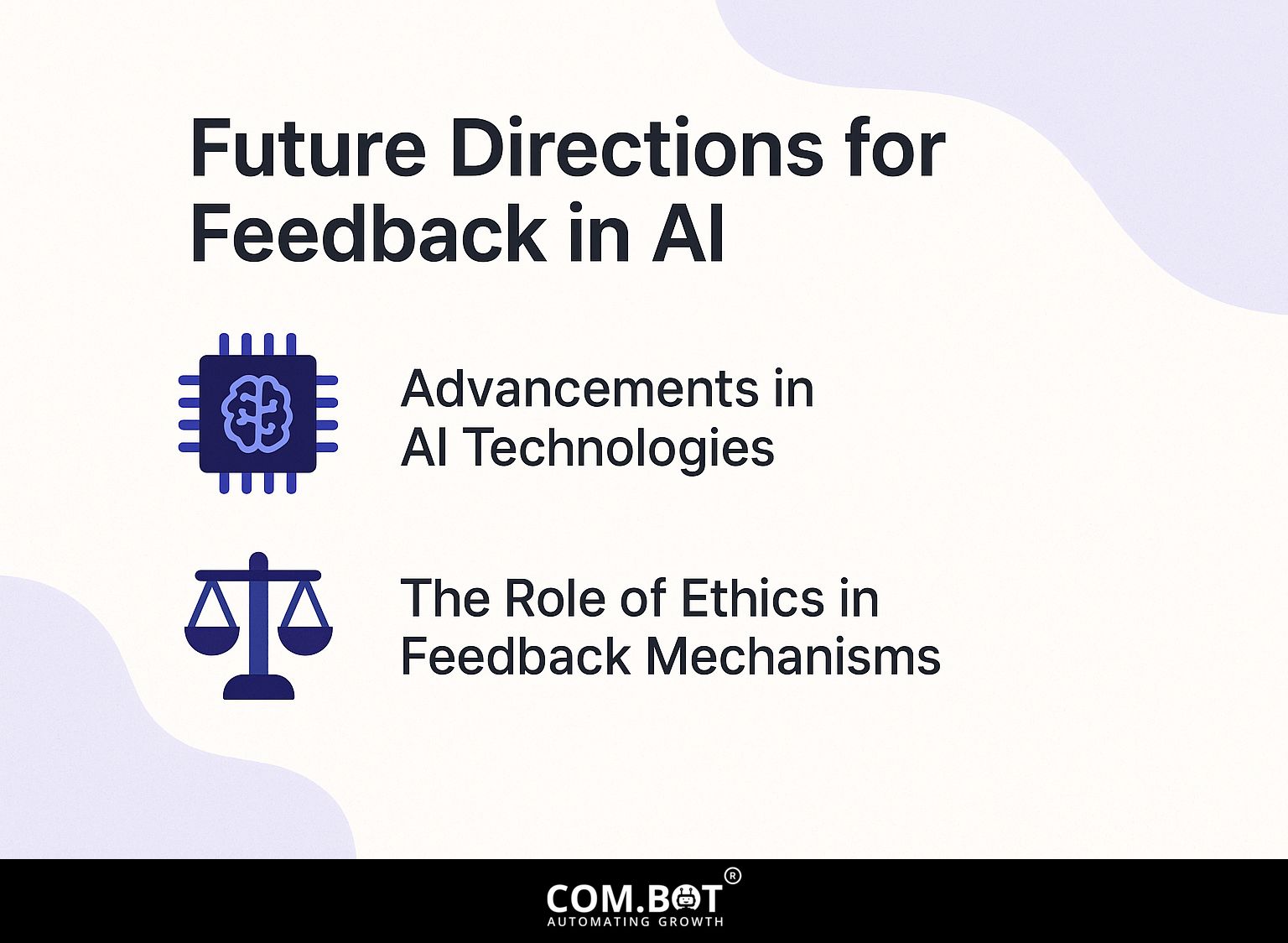
Feedback in AI systems is moving towards improving technology and including ethical aspects in feedback methods. Related insight: Feedback for AI Systems: Importance and Improvement Techniques
Advancements in AI Technologies
Recent advancements in AI technologies have paved the way for more sophisticated feedback mechanisms, enhancing model evaluation processes.
An important feature of Hugging Face’s Transformers is incorporating user input during training, which helps models learn from actual feedback.
Similar to this, Google’s TFX (TensorFlow Extended) provides strong systems for constant feedback integration, simplifying the process of improving models.
MLflow offers an easy way to track experiment results and quickly make changes based on user feedback.
Utilizing these tools can lead to significant improvements in model performance and user satisfaction.
The Role of Ethics in Feedback Mechanisms
Ethical considerations are important when creating feedback systems. They help make sure AI systems stay fair and open.
To integrate ethics into feedback practices, start by establishing clear guidelines for data collection. Make sure there is varied representation in the training data to avoid bias.
Consider creating a feedback loop where users can report perceived biases, enhancing transparency. Analyze case studies like the bias in facial recognition technology to understand ethical dilemmas.
Use tools like Algorithmia or Fairness Constraints to evaluate system fairness. Regularly review feedback and system outputs, adjusting as necessary to uphold ethical standards.
This approach builds trust and responsibility while you create your AI solutions.
Frequently Asked Questions
How does feedback play a role in improving AI systems?
Feedback helps find ways to make AI systems better. The system improves by learning from its errors and making changes to perform better and be more accurate.
Why is feedback important for AI systems?
Feedback is important for AI systems because it helps them to continuously improve and evolve. Without regular feedback, the system may become stagnant and less effective over time.
What are some common methods for gathering feedback for AI systems?
Some common methods for gathering feedback for AI systems include user surveys, data analysis, and user testing. These methods can give helpful information on the system’s strengths and weaknesses.
How can feedback make AI systems more accurate?
Feedback helps make AI systems more accurate by identifying and correcting errors or biases in the data. The system can change its algorithms and decision-making methods using feedback from actual situations.
Can feedback help AI systems adjust to different environments?
Feedback helps AI systems deal with new situations by providing new information that the system can use to change how it works and makes decisions. This lets the system remain useful and efficient in changing settings.
What are some best practices for providing feedback to AI systems?
Some best practices for providing feedback to AI systems include being specific and constructive, using real-world data and examples, and regularly monitoring the system’s performance to provide timely feedback. It’s also important to give feedback in a way that the system can easily grasp and use in its processes.
